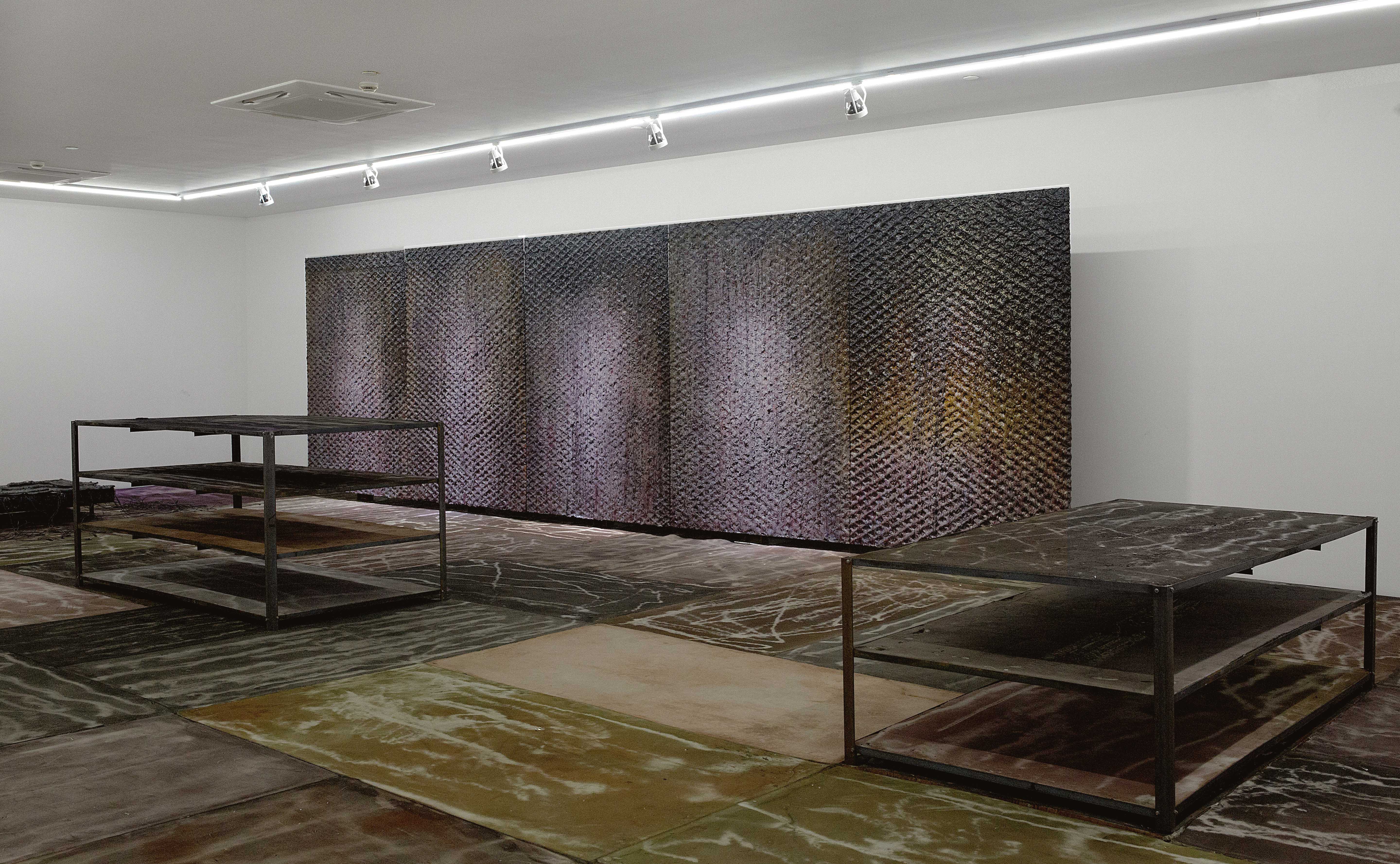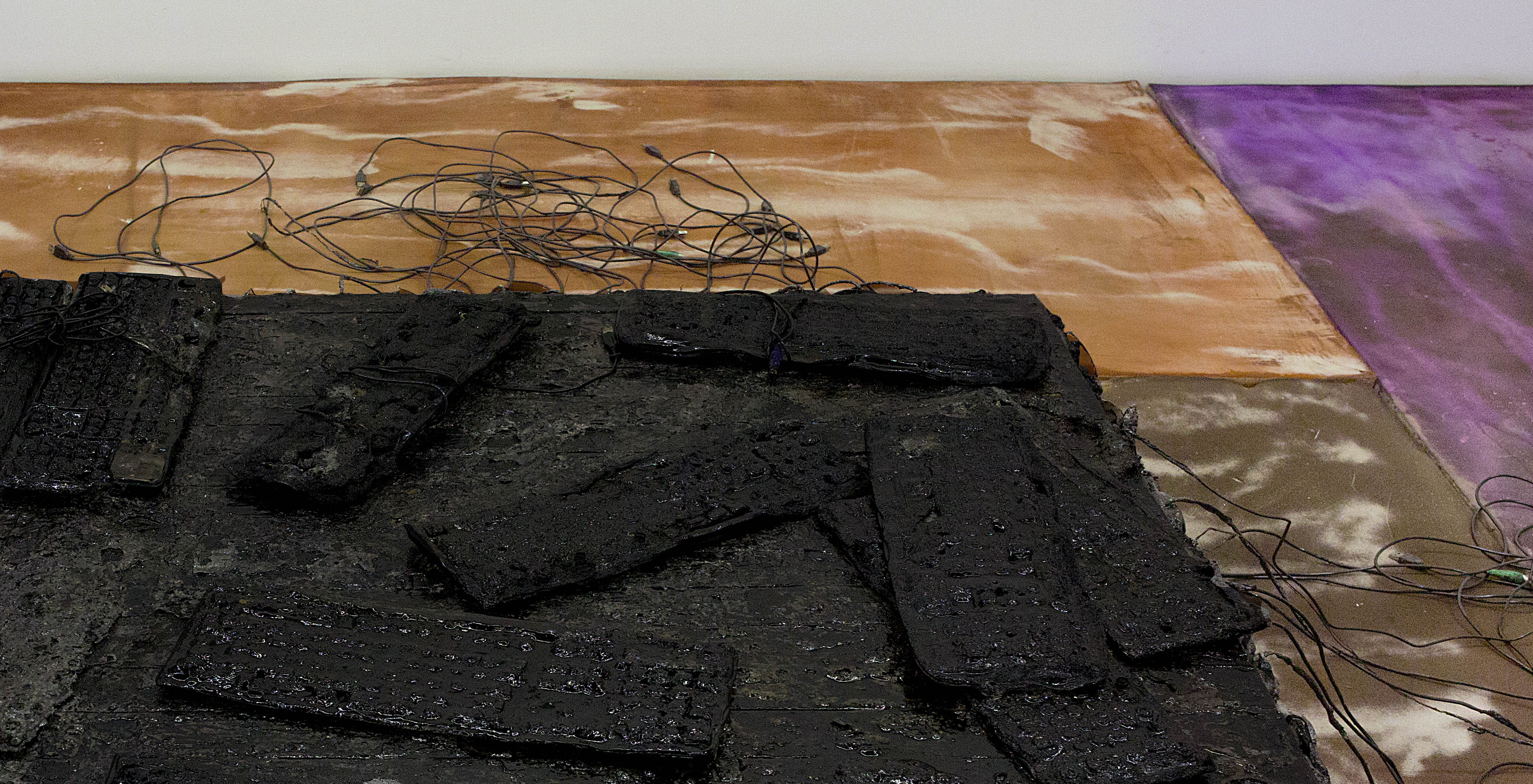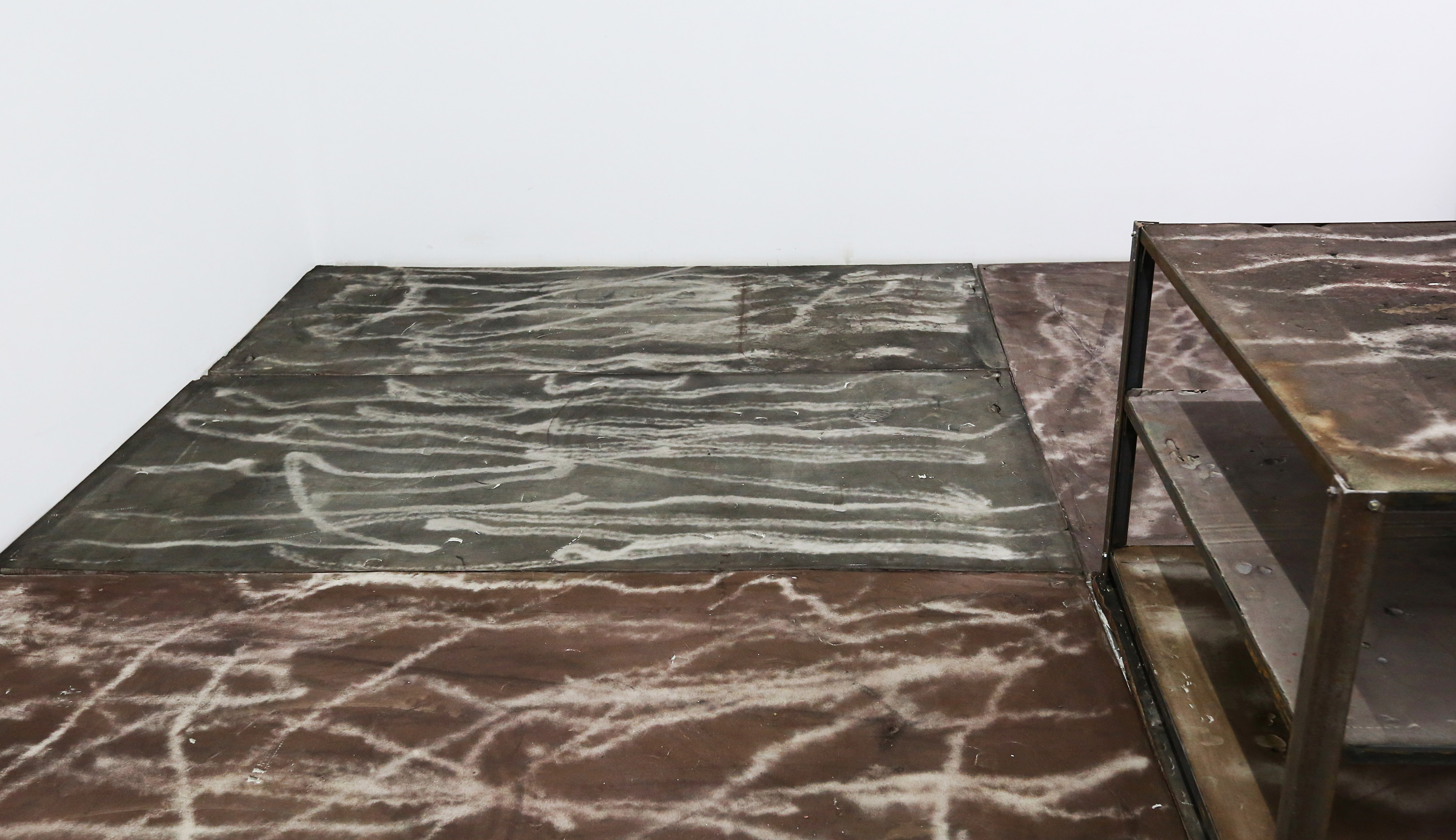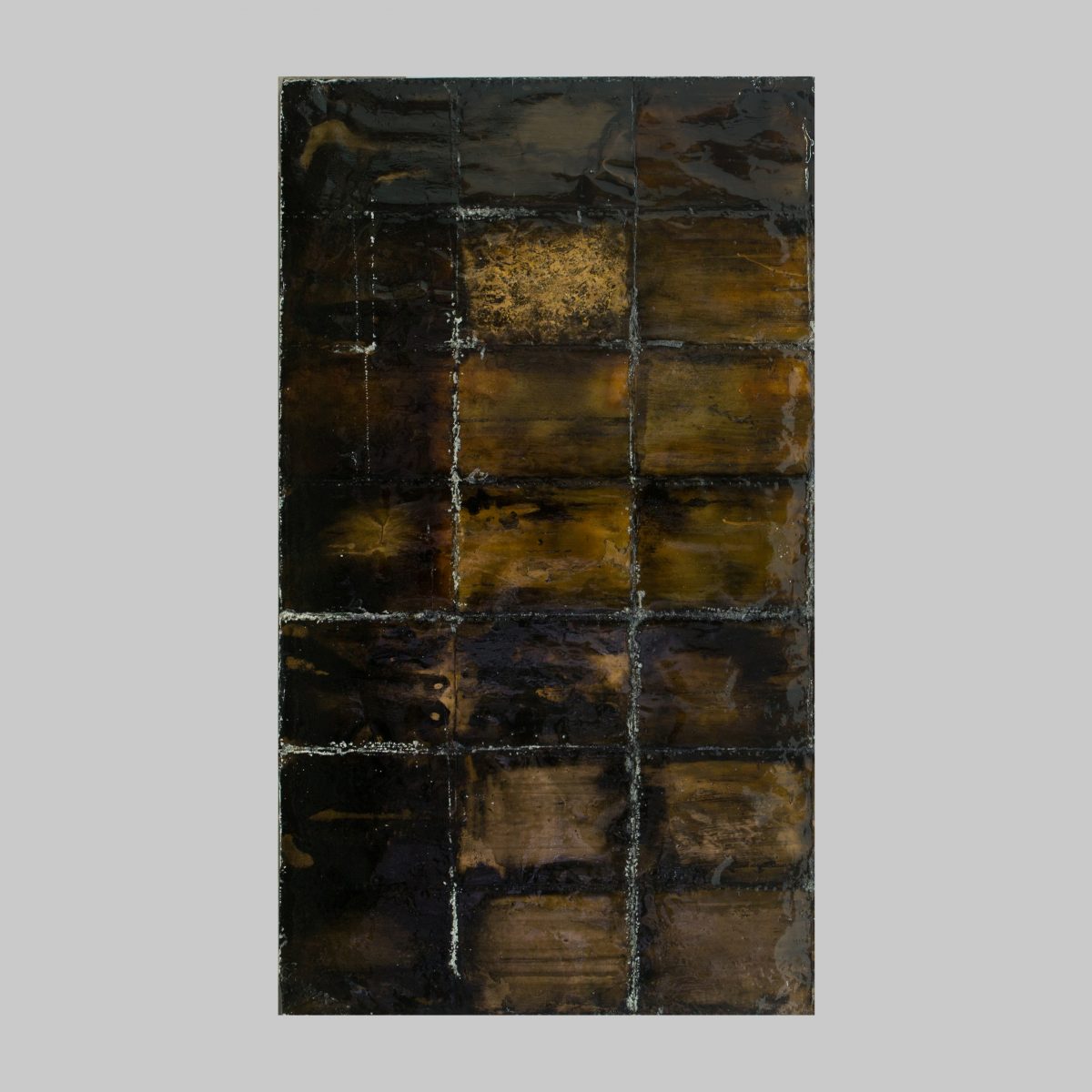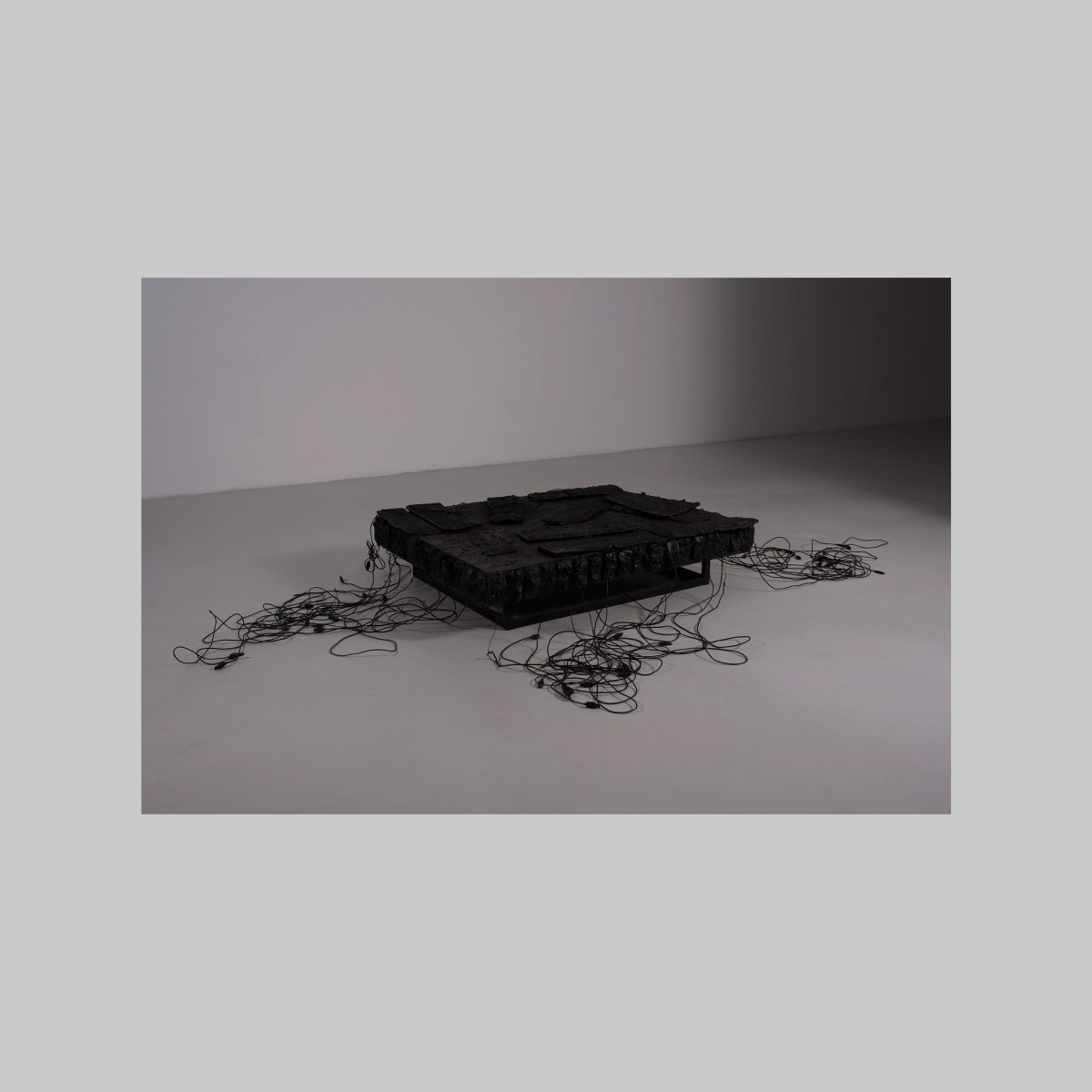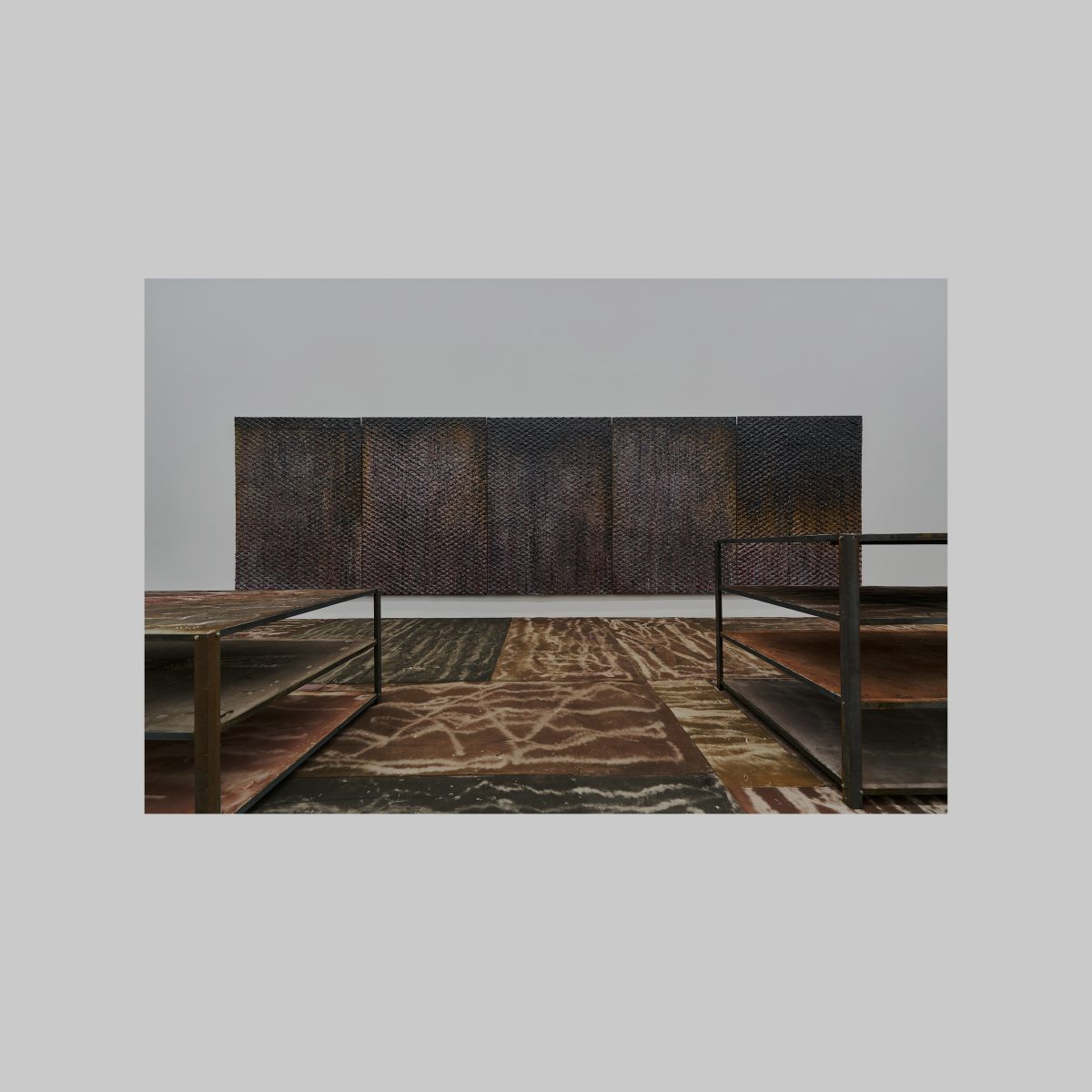November 5 – December 9, 2016
HDM Gallery, Hangzhou, China
Installation view of BAIYIN, HDM Gallery, Hangzhou, China, 2016
Courtesy of HDM Gallery
Photo: HDM Gallery
The exhibition will represent two series – “BAIYIN” and “OK Computer”, including 8 pieces of paintings made of mixed materials and 2 installations. His works are set against the background of Chinese reality, highlighting the aesthetic system of violence and social pessimism that the world is not concerned about. At the same time, “fire” as an important tool in the process of creation, is a direct result of Li Jingxiong’s embrace of “chaos” and “lack of control”. It faithfully records the fight of disorder and order.
“BAIYIN”refers to a well-known serial murder. This series of works was sprayed with fire, mixed with industrial pigments and waste materials. They are either placed against the wall, or hung on five pieces of steels. Li Jingxiong hopes to use such a highly conceptual way to state the only value of his job: creating works as a balance tool for the social system.
“OK Computer” is the product of Li Jingxiong’s reaction to the computer revolution. Its name comes from the Radiohead music album, which also expressed the concern about the enslavement of humans by computers. This series of works is the product of direct burning of the computer bodies which are then put reassembled and reorganized. The artist literally translates its name as “good computer” in Chinese.
Li Jingxiong, born in 1987, is a Chinese artist based in Shanghai with a Master’s Degree of Fine Art granted by Nanjing University of the Arts in 2013.During the years between 2013 and 2014 he was teaching in the Nanjing University of the Arts where he contributed to the establishment of the Department of Experimental Art. His being recognized in the field of art practice comes not only from his aesthetic career but also from his such artistic writings as for Modern Weekly, ARTTIME and ArtWorld China. His works cover paintings, installations, texts and videos, of which some have been collected by Sifang Art Museum, Goethe-Institute, AMNUA and other important private collectors in Asia.
Exhibited Works
Reference
-
LI JINGXIONG: BAIYIN – Diao Zhuo
Artforum.com.cn, November 17, 2016 (CN)

